Envisioning housing ideas for New York City's affordability crisis
By Justine Testado|
Thursday, Mar 30, 2017
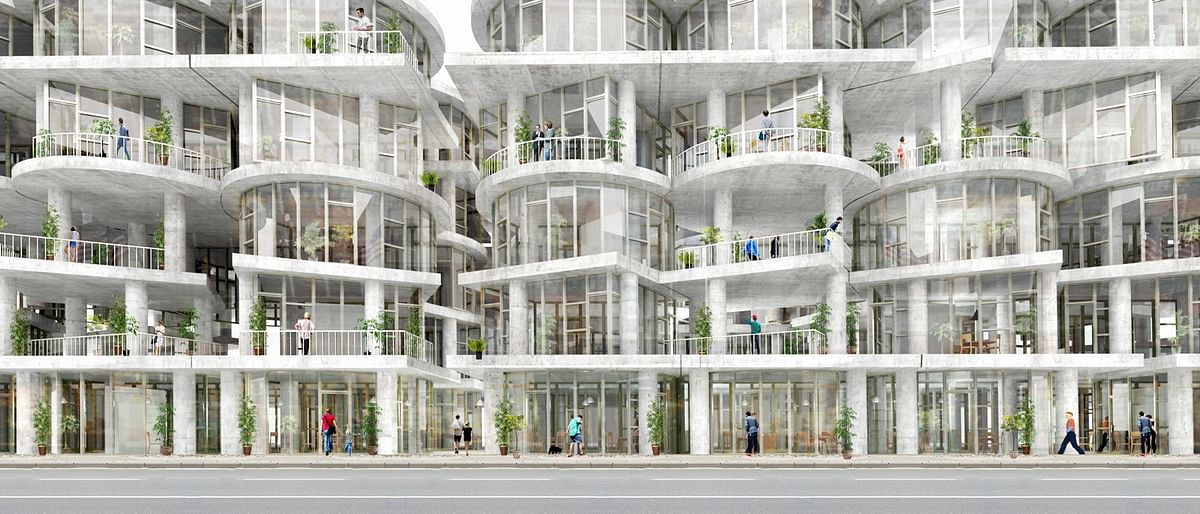
Related
For as long as New York City's affordability crisis persists, potential affordable housing solutions will always be needed. In one of their latest competitions, Bee Breeders challenged architects and designers worldwide to submit their most innovative housing ideas in the New York Affordable Housing Challenge.
“This competition recognizes the responsibility of architecture and its discipline in a systemic issue entwined between the built environment, policy, economics, and culture,” Bee Breeders writes.
The jury selected the three top prize winners, a Green Prize winner, a Rising Star Award student winner, and six Honorable Mentions. Among the winners, first place went to Chicago-based architects Lap Chi Kwong and Alison Von Glinow, who recently won the 2016 Chicago Prize.
Have a look at the top-winning entries below. Maybe they can help inspire your own housing solution ideas.
1ST PLACE: “The Table Top” by Lap Chi Kwong, Alison Von Glinow
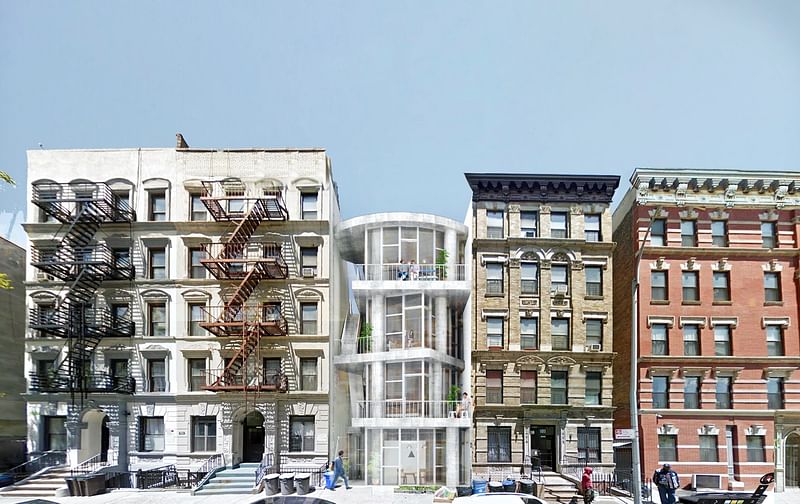
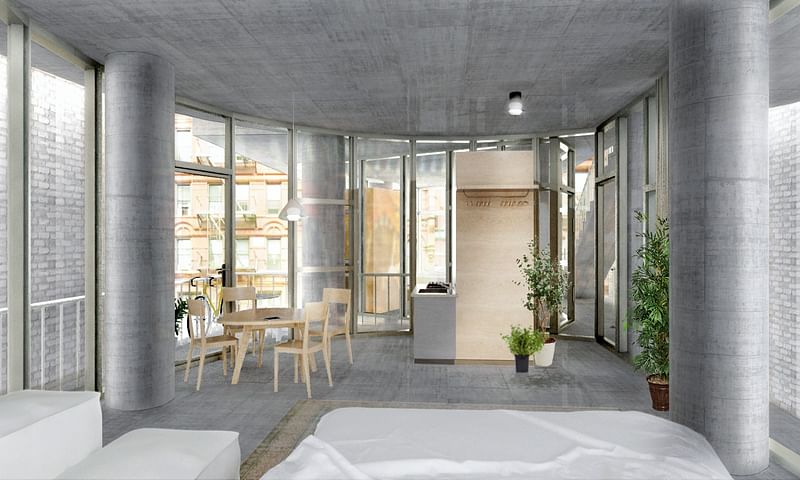

RELATED NEWS Closer look at 2016 Chicago Prize: On the Edge winner, “Lattices on the Drive”
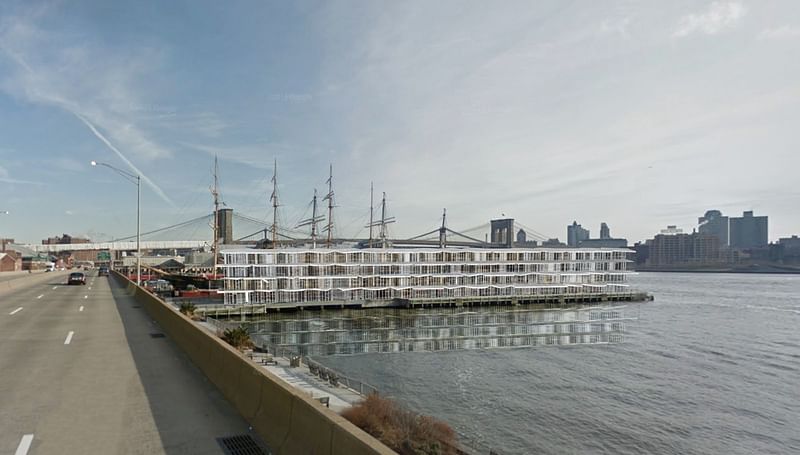
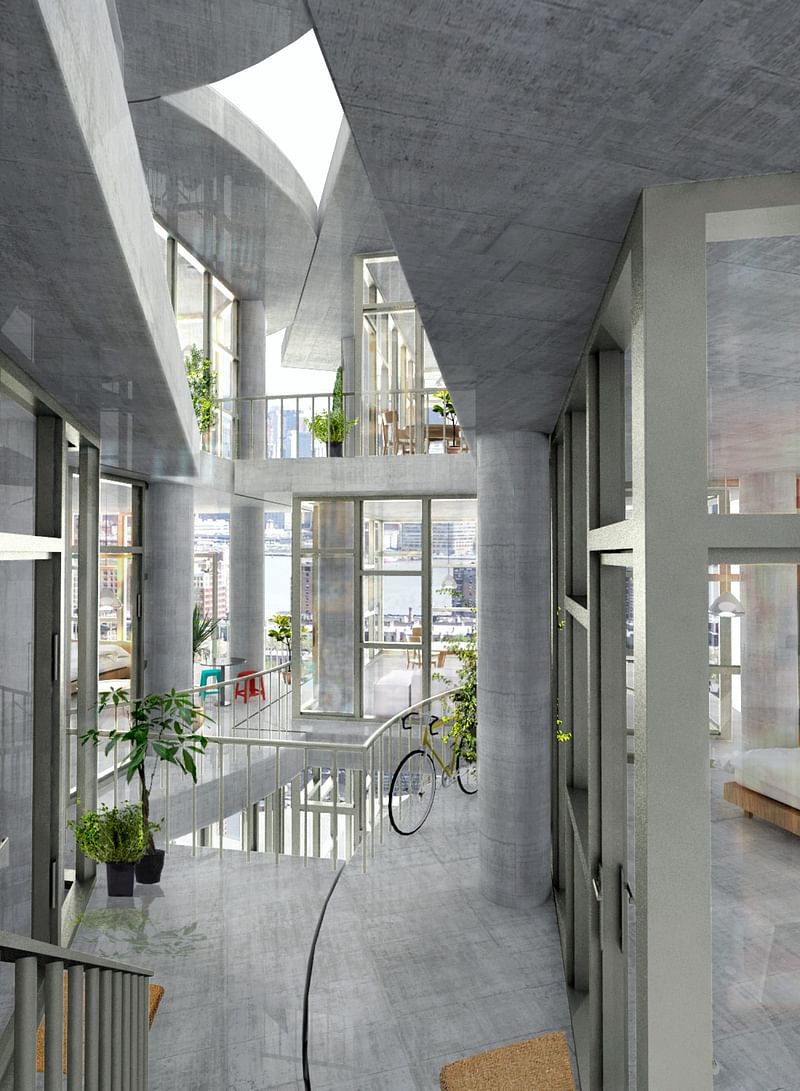
Jury commentary: “The success of the first place proposal lies in its use of a few simple modular elements aggregated to create a heterogeneous whole which serves to generate new modes of interaction between the inhabitants, their neighbors, and the public. Three basic unitized forms - circle, square, and rectangle - each made up of a slab and four columns stack, rotate, collide, and aggregate to create different unit types. The associated cost of the formal relationship between units is offset by the basic post and slab construction system of precast concrete. A simple storefront glazing system mediates between the units and the exterior while wood cabinets enclose private spaces and bathrooms. These stackable ‘table tops’ are also scaled and dimensioned to adapt to disparate site conditions, from a one unit wide walk-up, to a tower with setbacks of cascading balconies.
Most importantly, the rotations and collisions create apertures in the slab between units which form a liminal realm that serves as both public circulation and communal courtyards. These spatial juxtapositions generate unique thresholds, serving as intimate spaces for prolonged or chance encounter reflecting an updated notion of the stoop or porch ideal in the age of distraction.”
2ND PLACE: “Out-Of-Site” by Peter Wong, Christopher Jarrett, Nazinin Modaresahmadi, Robert Stubbs

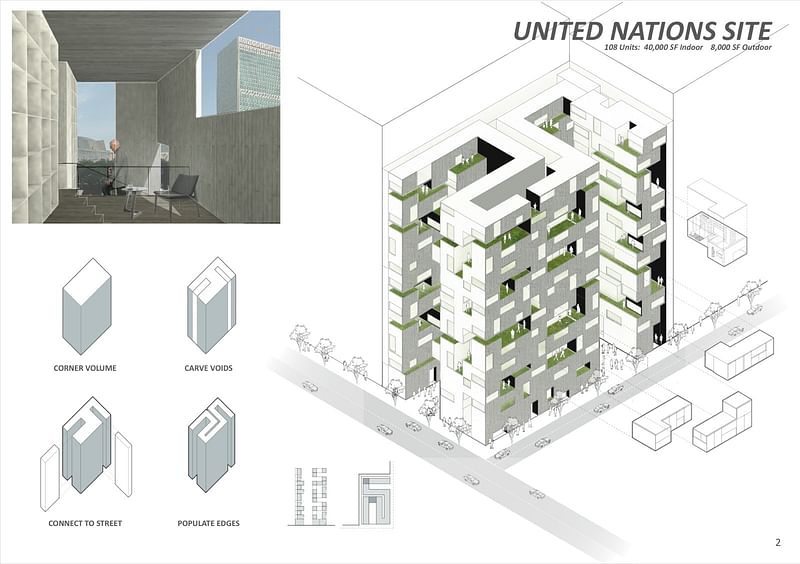
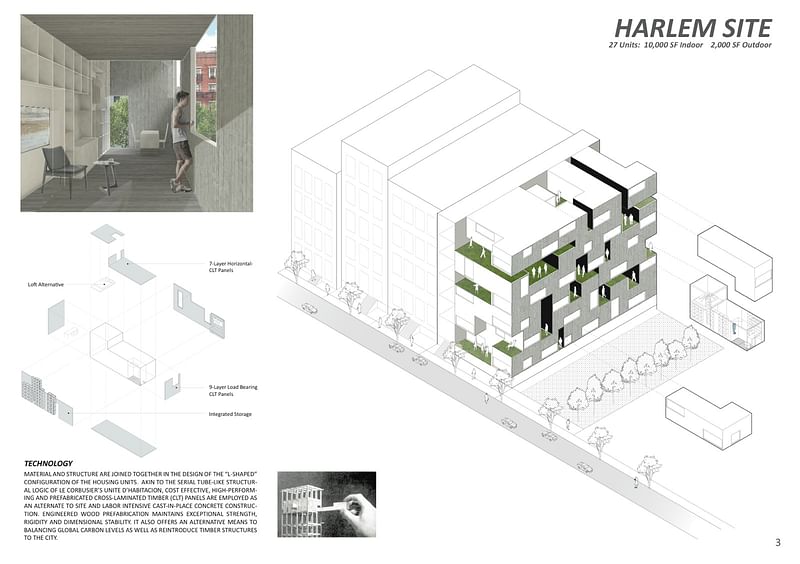
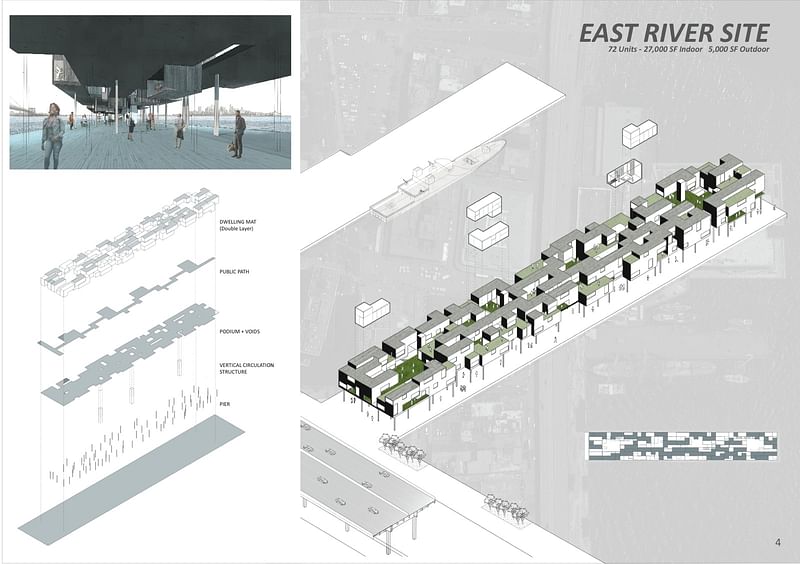
Jury commentary: “The second place proposal stands out for its successful implementation of modular units to create a morphological housing strategy. Drawing from Le Corbusier’s unit type for the Unité d'Habitation, the second place proposal employs an L-shaped housing unit, both in plan and section, to create a variety of massing arrangements. Rather than proposing a dense housing block of modular components, the combination achieves various organization and form uniquely weaving exterior space throughout. The courtyards developed between units break down traditional barriers between public and private in social housing, creating opportunities for public engagement between neighbors and the city at large.
At the smallest scale of the Harlem site, units are organized to engage the street in a similar manner to the surrounding context while providing an additional layer of public engagement through voided balconies. At the scale of the UN site, a strategy of larger voids is introduced to maximize exterior surface for greater opportunities of daylight, cross unit engagement, and connection to the street. At the East River Site, the units are combined to reinforce a horizontal massing lifted on pilotis, allowing continued public use of the waterfront pier. The selection of three varied New York sites demonstrates how morphologically robust the modular unit is by adapting to sites of different scale, shape, and context.”
3RD PLACE WINNERS: Liyang Chen, Yao Zheng
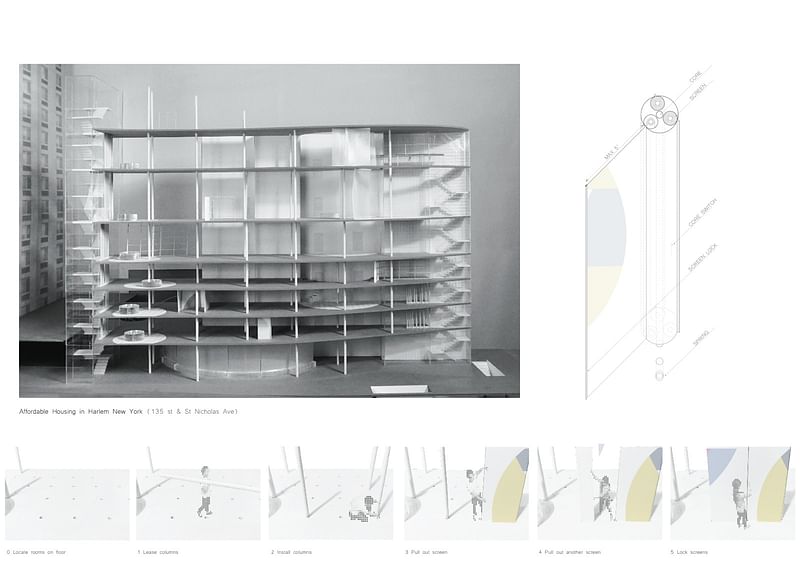
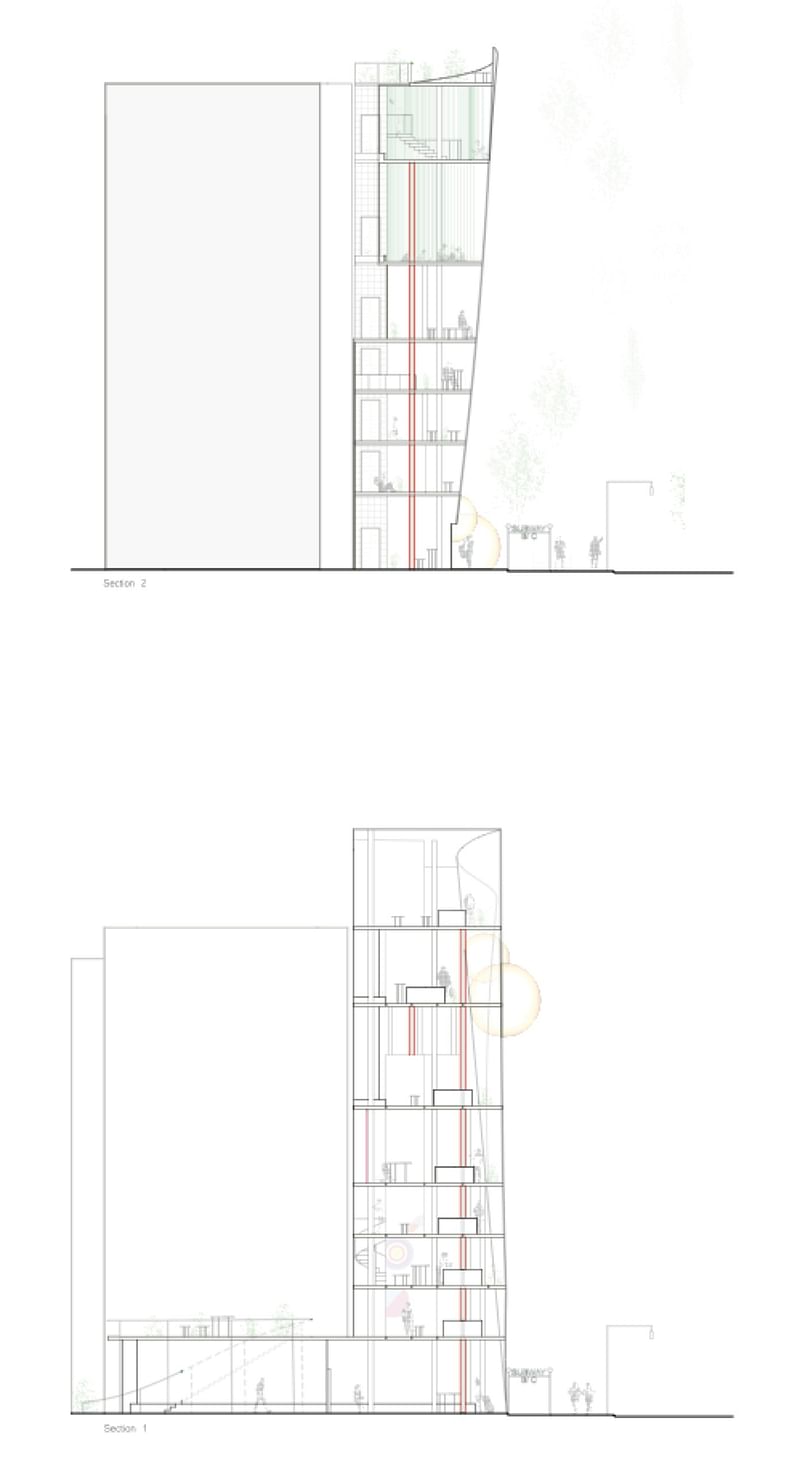
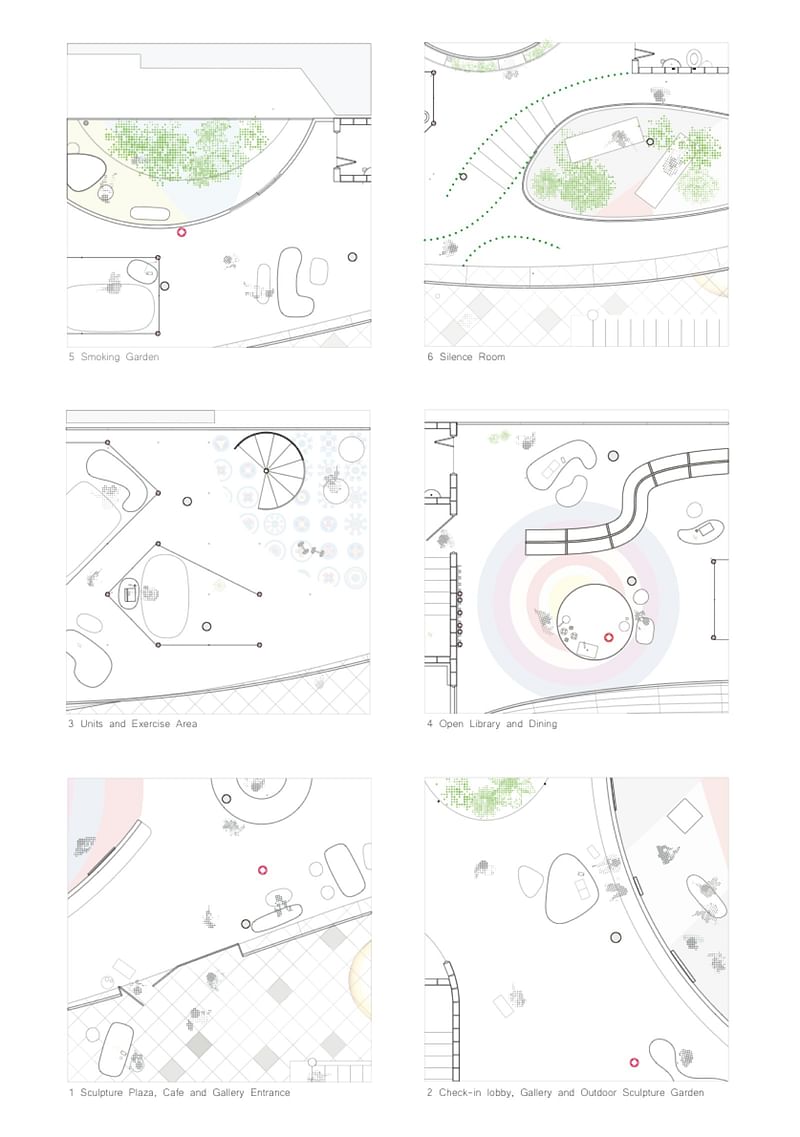
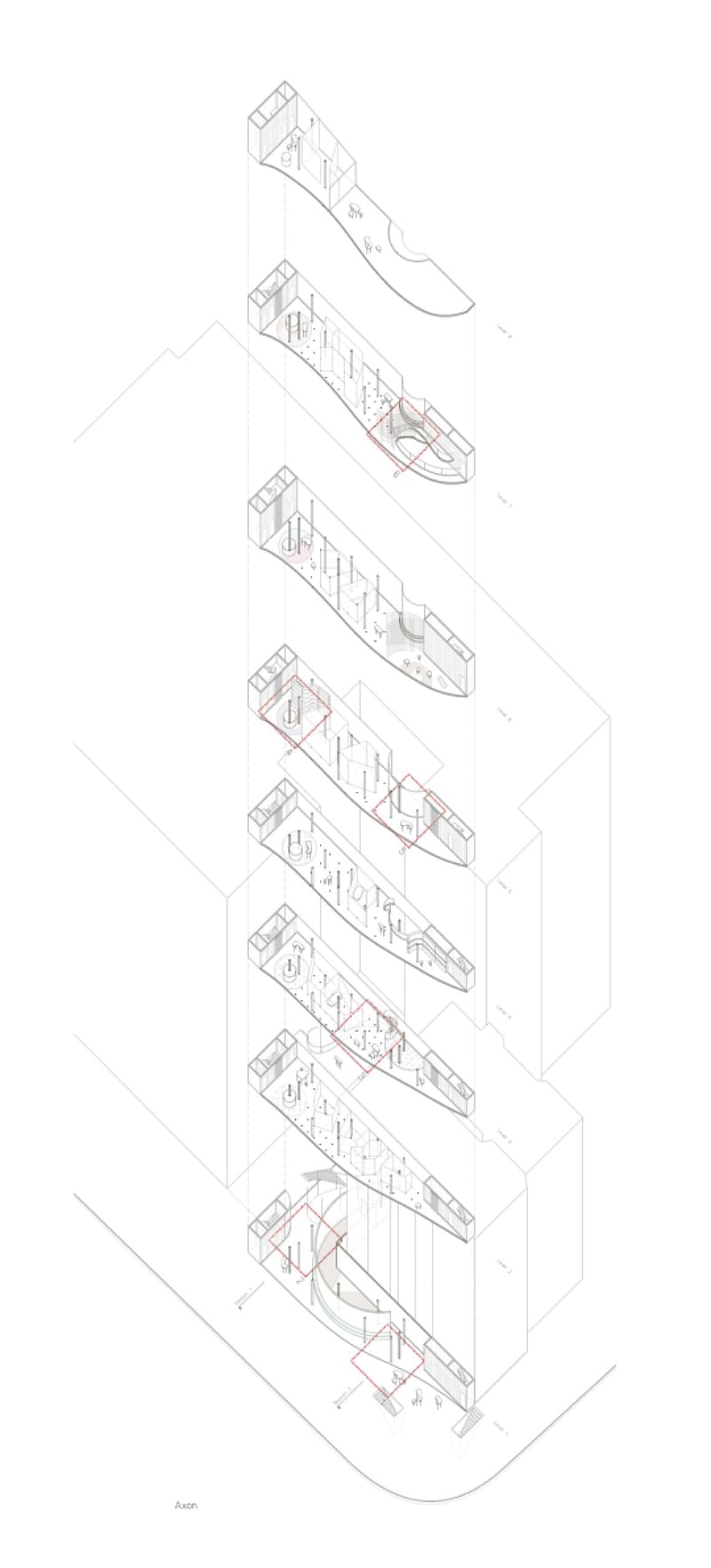
Jury Commentary: “The third place entry was unique in its proposition for a new paradigm of living that is as much social as it is spatial. The proposal is a simple slab and column structure with vertical circulation and mechanical systems pushed to each end to create a free plan. Each inhabitant has the ability to erect their own non-structural columns with fabric retractable walls, creating a terrain of private rooms within the common space of the floor. The spaces of the building can accommodate many types of users and family sizes, adapted to fulfill any requirement, indexing through use the varied and changing nature of its inhabitants. The deployable partitions create landscape of public and private space, achieving a rich and interior urbanism of zones and functions negotiated between each inhabitant.
This new model for domesticity is a powerful interrogation of how affordable housing can be achieved by minimizing costly and redundant private spaces in order to utilize shared infrastructures and amenities. Through the collectivization of common areas, the proposal creates a generosity of space that is both flexible in its use and its function, creating a home that is no longer a series of bounded rooms with a predefined set of behaviors.”
Check out the Green Prize and Student Winner entries in the gallery below. For the Honorable Mentions and further info on the winning entries, click here.
All images courtesy of Bee Breeders.
RELATED COMPETITION New York Affordable Housing Challenge

RELATED NEWS Winning concepts of the “Kip Island Auditorium” at the Riga International Exhibition Center

RELATED NEWS Glimpsing into the World Wide Web's past + future in the London Internet Museum

RELATED NEWS Re-examining the role of cannabis through architecture in the Cannabis Bank competition

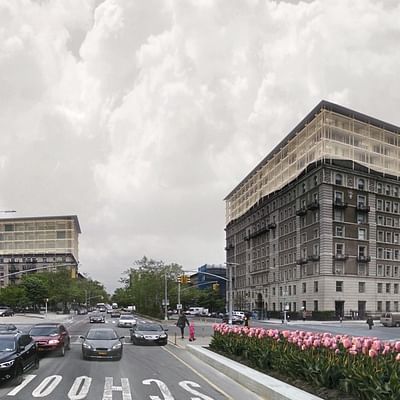
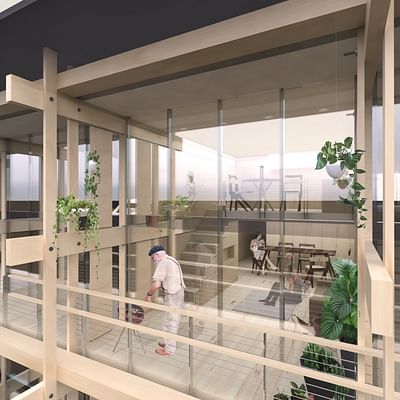
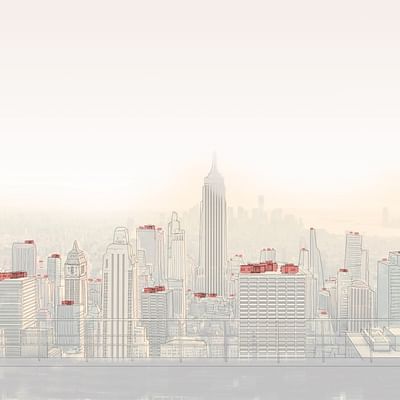
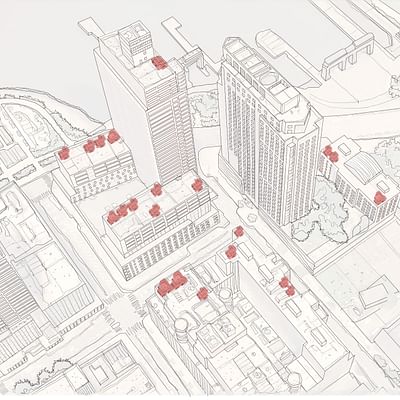

Share
0 Comments
Comment as :